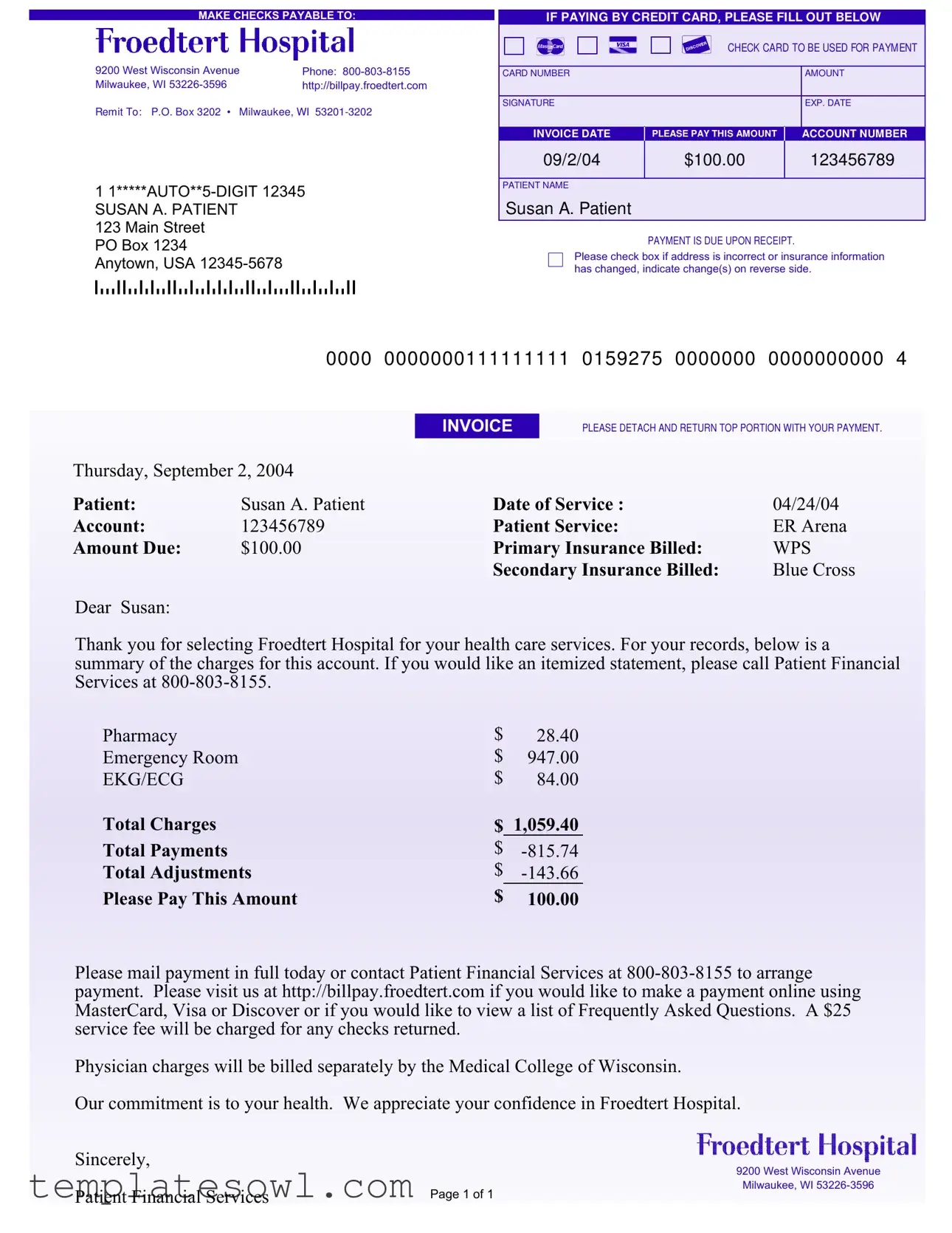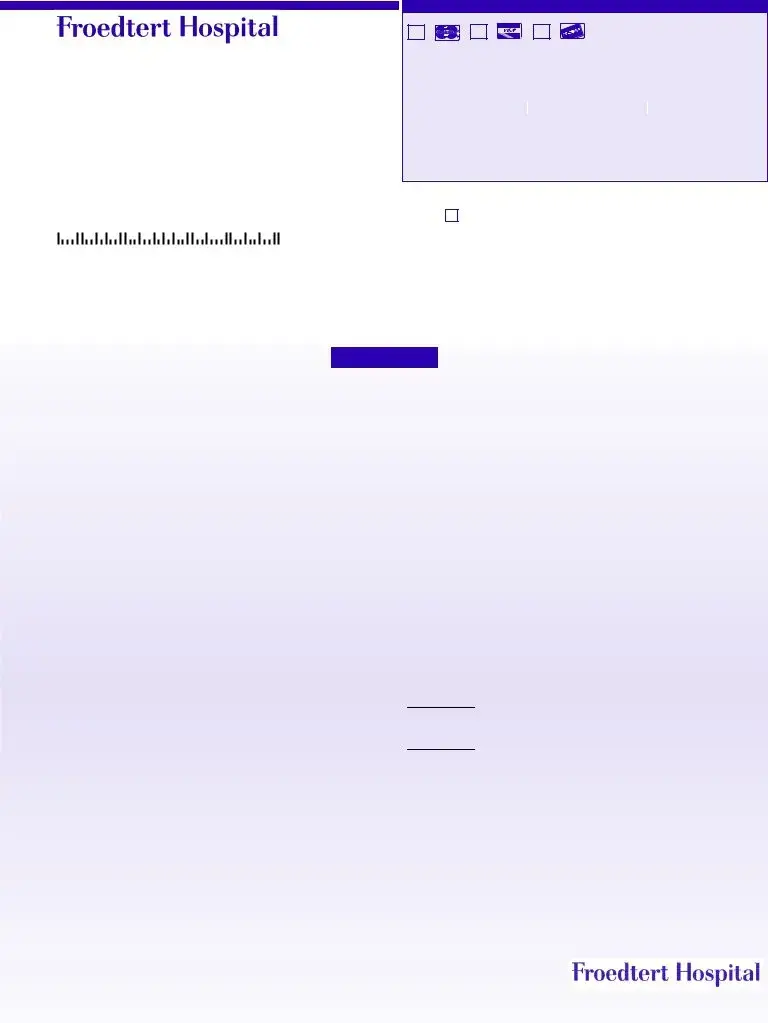Filling out a hospital bill form can seem straightforward, but many people make errors that can lead to delays in payment or complications in their medical records. Here are ten common mistakes to avoid.
One frequent error occurs when individuals forget to provide their full name. For instance, simply writing "Susan" or "Patient" instead of Susan A. Patient can create confusion and mismatches in the hospital's records. Always ensure that your name matches what is on your identification documents.
Another mistake is neglecting to update contact information. Many patients will leave their address as it was previously listed, even if they have moved. If you have a new address, it is essential to update it on the form to ensure the hospital can reach you regarding any follow-up matters.
Many people also overlook the insurance details. Failing to fill in both the primary and secondary insurance company information can lead to billing issues. Be detailed with the names and addresses of both insurers and ensure that all ID and group plan numbers are accurate. Miscommunication can cause unnecessary delays in processing your bill.
Not signing the form is another common mistake. Payment forms are legal documents, and without your signature, they are considered incomplete. Always double-check that you have signed the form and written the date correctly.
Additionally, individuals sometimes forget to indicate their method of payment. When paying by credit card, it's crucial that the card number is filled out correctly. If in doubt, double-check your card against the information you are providing on the form.
Some patients ignore the instructions regarding balance payment. Even when instructed to pay the amount due upon receipt, some may assume they have more time. Paying promptly is essential to avoid late fees or other financial penalties.
It's also important to be cautious about the format of the dates. Errors like reversing day and month can cause confusion. Instead of writing 09/2/04, the correct format should be consistently applied throughout your documentation to avoid ambiguity.
Another easy mistake is the failure to check for discrepancies. Patients often assume the amounts on the form are accurate without reviewing them closely. Before submitting, ensure that your total payments and adjustments are correct. If in doubt, request an itemized statement for clarity.
Finally, individuals sometimes forget to keep a copy of the filled-out form for their records. Documenting what you send can be crucial if there are questions or disputes in the future. Having proof of what information you provided can aid in resolving such issues.
By avoiding these common pitfalls, patients can ensure that their interactions with hospital billing processes are smoother and more efficient. Proper attention to detail saves time, money, and frustration in the long run.


